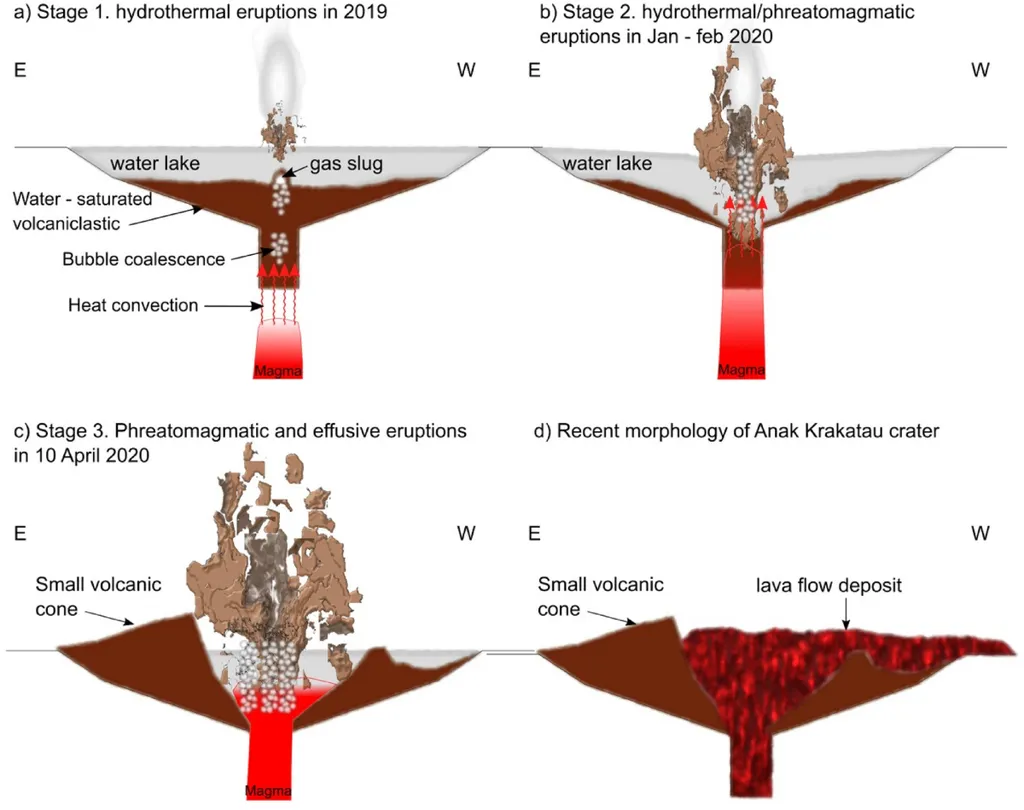In the ever-evolving landscape of volcanic activity, Anak Krakatau, the child of the infamous Krakatoa, has been making headlines once again. A recent study published in ‘Geoscience Letters’ (translated as ‘Geoscience Letters’), led by Herlan Darmawan from the Laboratory of Geophysics at Universitas Gadjah Mada, has shed light on the dramatic morphological changes of this volatile island between August 2019 and May 2020. The research, which utilized advanced imaging techniques, offers crucial insights that could significantly impact the energy sector and volcanic hazard management.
Anak Krakatau, a stratovolcano located in the Sunda Strait between the islands of Java and Sumatra, has been in a state of flux since its catastrophic flank collapse on December 22, 2018. The recent study, employing UAV SfM photogrammetry, Sentinel and Pleiades satellite imageries, and fieldwork photographs, has revealed a complex interplay of hydrothermal events, phreatomagmatic eruptions, and effusive activity that has reshaped the island’s morphology.
“Anak Krakatau is currently in a reconstruction phase,” explains Darmawan. The study highlights the significant enlargement of the west flank area due to tephra and lava flow deposits from a large phreatomagmatic and effusive event on April 10, 2020. The lava flow, with its blocky surface and highly fractured texture, elongated approximately 742 meters from the pre-existing crater lake to the west shoreline, increasing the island’s area from 2.99 km² to 3.027 km².
The implications of these findings are profound for the energy sector. Volcanic activity can significantly influence geothermal energy potential, and understanding the morphological changes of Anak Krakatau can help in assessing and harnessing this renewable energy source. Moreover, the study’s advanced imaging techniques, including high-resolution Pleiades satellite images and UAV photogrammetry, offer promising tools for monitoring volcanic activity and mitigating risks in the energy sector.
The research also underscores the importance of continuous monitoring and advanced imaging techniques in understanding volcanic activity. “Our study demonstrates the power of combining multiple data sources to gain a comprehensive understanding of volcanic processes,” says Darmawan. This approach can be instrumental in predicting volcanic hazards and ensuring the safety of energy infrastructure in volcanic regions.
As we delve deeper into the 21st century, the need for sustainable energy sources and effective hazard management becomes increasingly paramount. The study on Anak Krakatau’s morphological changes, published in ‘Geoscience Letters’, offers valuable insights that could shape future developments in the field of geothermal energy and volcanic hazard management. By embracing advanced imaging techniques and continuous monitoring, we can better navigate the dynamic landscape of volcanic activity and harness its potential for a sustainable future.

